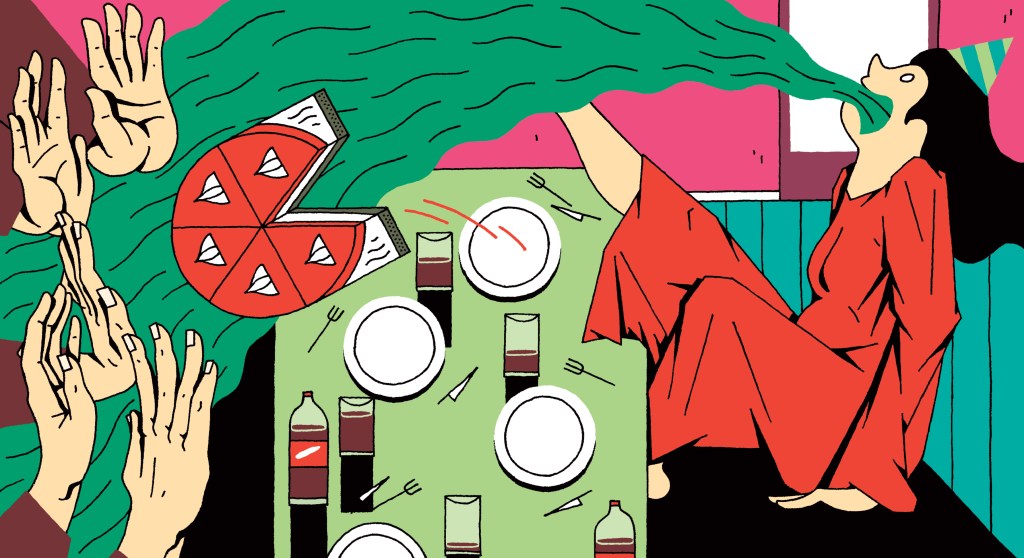On a cool March day in Kentucky in 1876, hunks of meat rained down from the sky. The event was witnessed by a farm wife, whose yard was scattered with the chunks of flesh—enough to, as was described at the time, “fill a horse wagon full.”
“I have no idea what that means, but it was published in virtually all the accounts I’ve seen,” Kurt Gohde, a professor of art of Transylvania University in Lexington, Kentucky, and an expert on the meat showers, said on the latest episode of Motherboard podcast Science Solved It. “In 1876, if you said, ‘Oh it was a horse wagon full of meat,’ that was like saying now, ‘It’s like a big gulp from McDonalds.’ So everybody knew exactly what that meant.”
Videos by VICE
Gohde became interested in the meat showers after moving to Kentucky and picking up a book about local weather phenomena. Shortly after, while going through the school’s archives to photograph old portraits, he stumbled across an old jar with a small chunk of flesh floating in amber liquid. Based on his knowledge of the event and the dating of the jar, he was able to determine that it was a sample of that very meat shower.

At the time of the meat rain, locals were puzzled about what could have caused it. They tried to determine what kind of meat it was, with guesses that ranged from mutton to bear meat, and some neighbors were even brave enough to eat it.
“So meat falls from the sky and apparently that was not alarming enough to them to not eat it,” Gohde said.
But even after tasting it, the townspeople of Olympia Springs, where the meat fell, couldn’t surmise how it happened. Samples, like the one sent to Transylvania University, were preserved and sent to scientists around the country but before they got a chance to present their hypotheses, everyone kind of lost interest. It wasn’t until Gohde discovered a long overlooked explanation from a scientist in Kentucky that we finally got the answer: vulture vomit.
“Meat is heavy,” explained Joe Walston, the Vice President for Field Programs at the Wildlife Conservation Society “If you want to take off quickly with a huge amount of weight, the first thing you’re going to do is vomit.”
Vultures don’t typically vomit from feeling sick because their stomachs are super acidic, which allows them to digest all of the gross stuff they eat, like partially-decayed carcasses. But vultures tend to gorge themselves when they eat because they don’t know when they’ll get their next meal. This means they have to sit and digest for a while after feeding, but if something startles them and they need to get airborne quickly, they have been known to vomit to lighten the load—they’ll even vomit in the air as they’re taking off, if they have to.
Walston said the theory that a group of startled, recently-fed vultures vomited causing the meat showers was a highly plausible theory, and made sense with what we know about vultures. Gohde added that the state of the meat, and the kind of tissue found in it, would also make sense for a vulture’s diet.
“It’s not all like it was run through a meat slicer, so it is different sizes, and it is torn pieces. That does make sense,” Gohde said. “And it also makes sense because the scientists who [later] looked at it under a microscope didn’t venture any guess as to what animal it came from. But they noticed that there was cartilage and lung tissue.”
It sounds like something from a horror film, but the truth about this story is that the only horrifying thing is that a bunch of people most likely ate chunks of vulture vomit, trying to figure out what it was.
Listen to our podcast about the world’s greatest mysteries that were solved by science.


